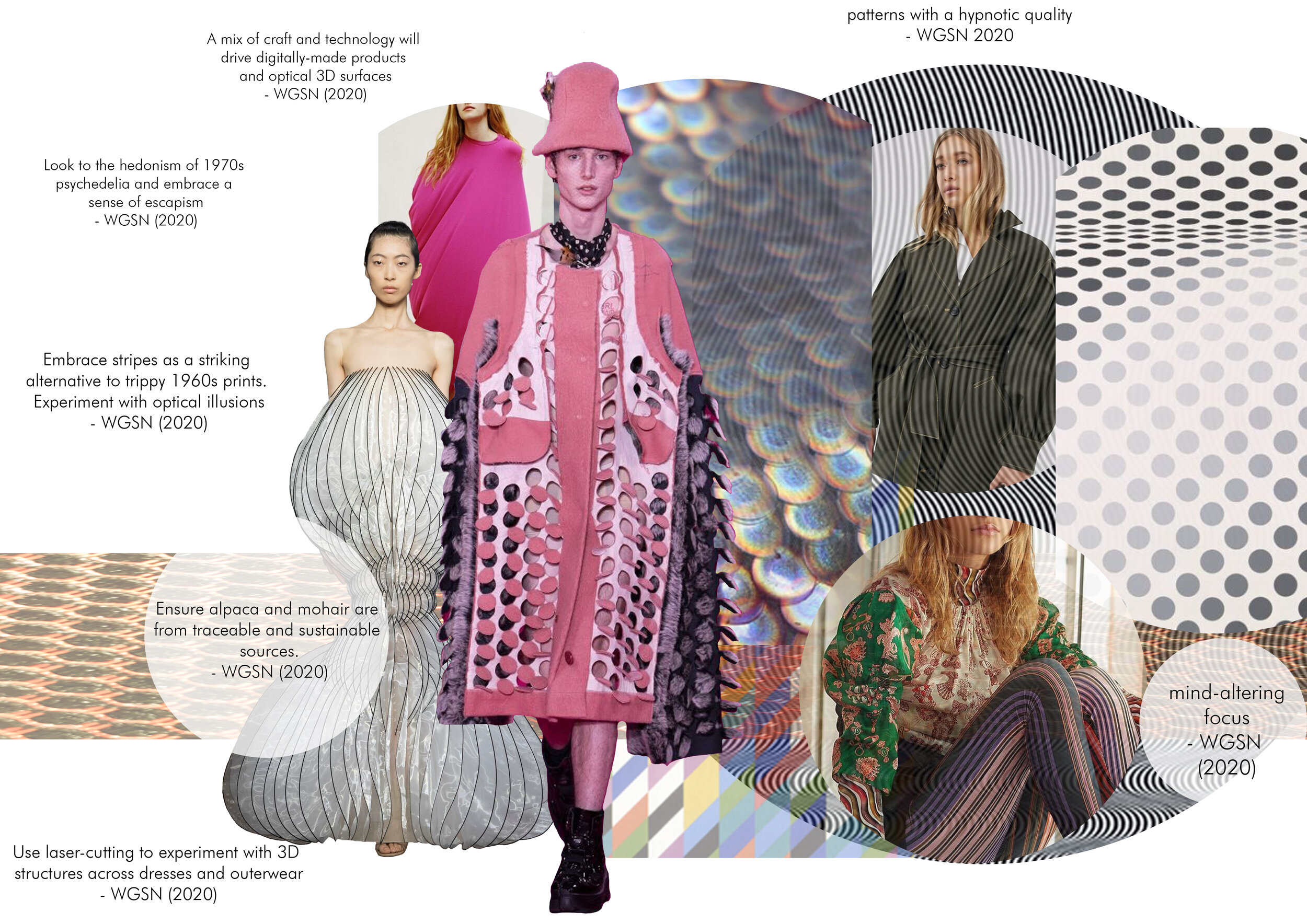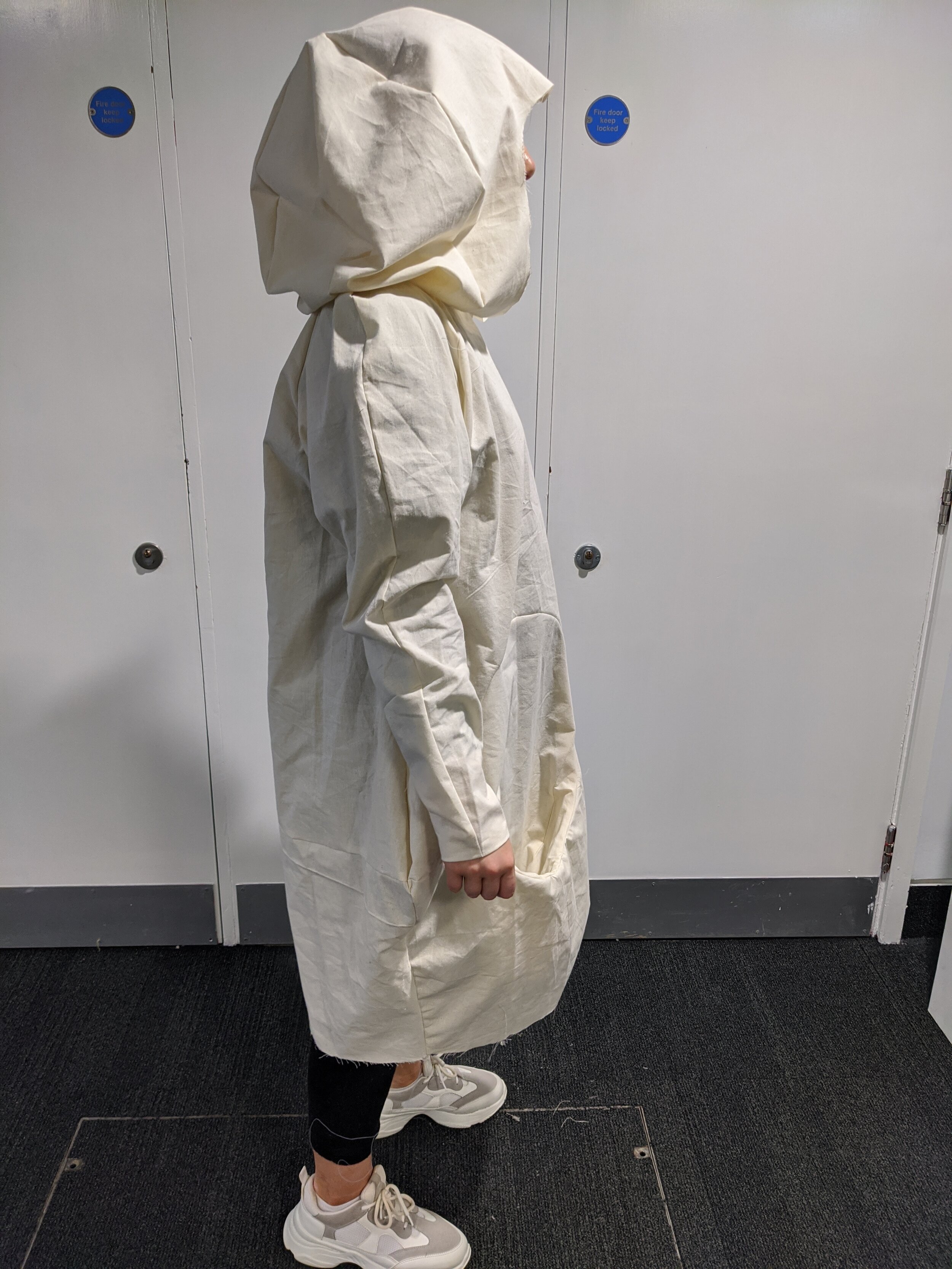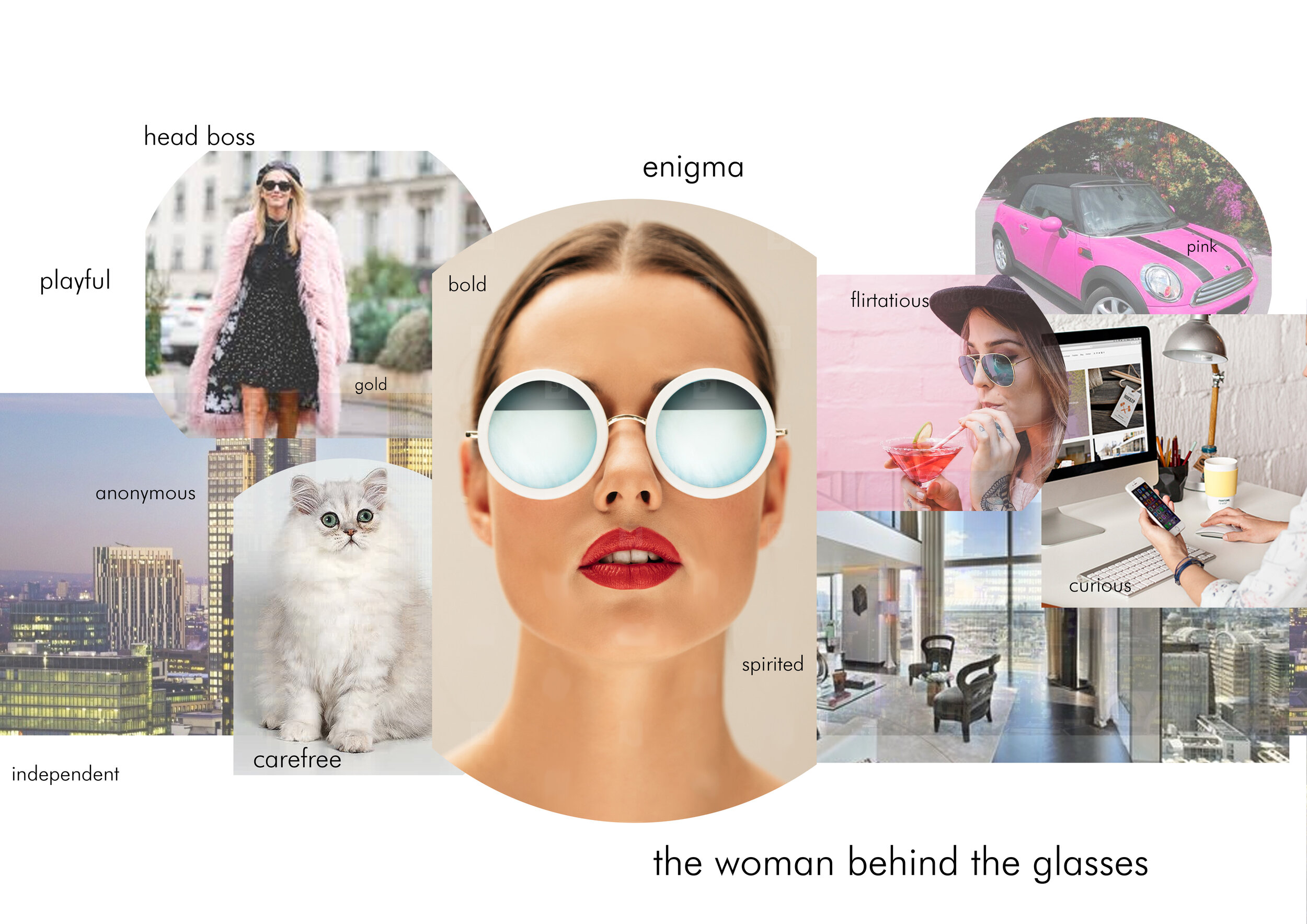Meet Kirsty-Anne McGowan, a fashion graduate at Solent University whose final year project was initially inspired by an exhibition she visited in France. Having to adapt her collection due to Solent closing its studio doors amidst the COVID-19 pandemic, Kirsty-Anne’s final collection is the result of trial and error and creative flexibility despite adversity. Read her story below.
What is the most valuable thing you have learnt at university?
Aside from how to survive in a studio 24/7, it would be a combination of appreciating the finer details when creating a garment - from the pattern cutting to the sewing - and learning digital skills. I can't imagine my life without Photoshop and Illustrator now, it has been invaluable to learn that.
What was the starting point of inspiration for your final project?
I went to an Op Art exhibition at the Modern Art Museum in Nice, France. I think I had spent most of the summer trying to find a topic and nothing was clicking because I was searching too hard. In the end, I decided to stop looking and this topic just fell into my lap. After researching it a bit more, I landed on the final focus of optical illusions and human perception.
What form will it take?
Originally, I was going to make a collection of 6 outfits, complete with a tech pack and end of year show. However, due to COVID-19, I have had to scale that back as I rely on laser cutting to make all my outfits and can't access that from home. I am hoping to make four outfits, with a strong portfolio to go alongside.
What materials have you used and how did you source them?
My main materials are crepe and fur, but I also use lycra and plastic acrylic. I went to London (Berwick Street and Goldhawk Road) a lot and collected lots of fabric samples, as well as gathering a selection from online sites. A lot of it, particularly for the fur and plastic acrylic was a case of searching for companies that offered these for a reasonable price.
How has it evolved from your initial ideas and what have you learnt along the way?
In some ways, it hasn't changed that much. I started out experimenting with laser cutting and layering fur and crepe fabric together, and this is the technique that I am using in my final outfits. At the same time, however, my designs developed and changed massively from my initial rough drawings.
The main thing I learnt was how to use a laser cutter - I would consider myself an expert now! Also, we were taught the Shingo Sato method of pattern cutting, which I enjoyed and played around with for some of my initial samples.
What are the messages and themes behind your project that you want people to take away?
My collection was always intended to be fun so there are no deep messages behind it. I wanted to create something that people couldn't look at for too long without their eyes tripping. I wanted people to realise that perception is based on what angle you see something at. I think I achieved that.
What’s an aspect of the fashion industry that you’re passionate about fixing or having a positive impact on?
The environmental damage. My dissertation focused on how the fashion industry is responding to the rise of veganism, specifically focusing on the leather industry. There are no good, commonly used alternatives to real leather. I would love to one day see leather only made from plant-based substitutes. At the moment this is the best solution.
Also, the stigma towards fashion students. I know a lot of people who studied BScs, who look down on people doing fashion - BA's in general - as they see it as a 'soft' option. But it's one of the hardest degrees out there in my opinion! I would like people to realise the effort that goes into making even a mini collection from start to finish.
What is your plan once you finish your BA?
I am planning on doing a masters degree in psychology. It is a bit of a jump from fashion so I am still trying to find a course that is suited to me and my current level of knowledge, but I am excited about it! After that, I would like to join the industry as a fashion buyer or merchandiser. I'm hoping to combine my under and postgraduate courses to achieve this.









